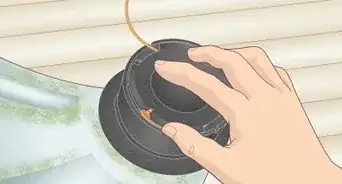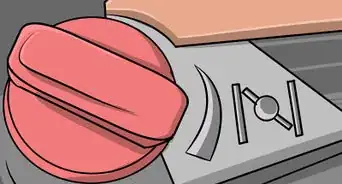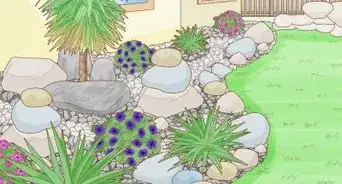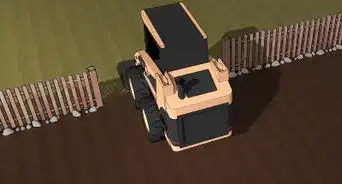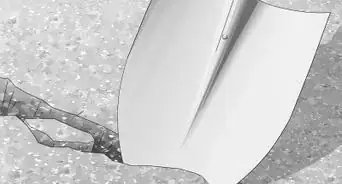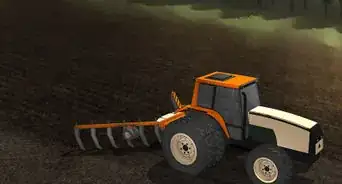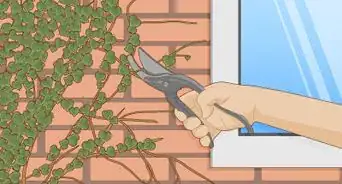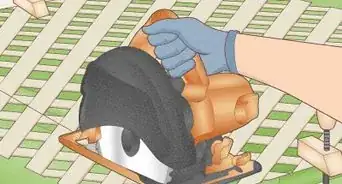This article was co-authored by Grant Wallace. Grant Wallace is a Landscaper and Owner of Grantlanta Lawn in Atlanta, Georgia. With over seven years of experience, he specializes in lawn maintenance and landscape installation. In 2012, he earned his BA from the University of West Georgia. Grant has been profiled in Shoutout Atlanta, Canvas Rebel, and Voyage ATL.
There are 10 references cited in this article, which can be found at the bottom of the page.
This article has been viewed 72,733 times.
A landscape border can make a traditional, classy accent to your home when placed around the perimeter. These borders are not especially hard to build and require little more than bricks, plants, and imagination.
Steps
Planning and Installing the Border
-
1Take note of your home's key features. Formal styles tend to have symmetrical designs while informal styles tend to have asymmetrical designs. Instead of contrasting these features, compliment them. If, for instance, you have a formal style home, like a Colonial Revival, you should choose a fairly formal landscape garden that closely frames the perimeter of your house. For less formal styles, like ranches, curvy casual landscape borders are the way to go.[1]
-
2Measure out the area. The exact amount of space your border should take up will depend on how large your yard is, but the average suburban home can handle a border that is about 2 to 3 feet (2/3 to 1 meter) out from the house.[2]
- The border can follow the entire perimeter of your house, or you can choose to highlight certain areas. You can also add visual interest by creating a curved, uneven path rather than one with straight lines and sharp corners.
Advertisement -
3Mark the border. Clearly marking where the border begins will make it easier to work with. Hammer wooden stakes in the ground, several feet (approximately 1 meter) apart from each other or by using enough to clearly form the necessary curves of your design. Tie plastic tape or rope around the stakes, connecting them together to create a visible yet temporary border.
-
4
-
5Level the ground. Use a spade to make the ground as even as possible.
-
6Create a second temporary border. Position the first brick so that the top corner rests against one of the wooden stakes. The brick should be perpendicular to the side of the house. Place other bricks at each stake to gauge the right distance. Then, move the stakes and the tape back so that they are at the bottom of each brick, measuring out the brick border itself.
-
7Create a second trench. Cut into the ground another 1 inch (2.5 cm), removing the soil and leveling the area out as much as possible.
-
8Fill the second trench with wet mortar. Remove the guide bricks and fill the area in with wet mortar.
-
9Lay the bricks. Place the bricks directly over the mortar, just below the level of your lawn. Leave a little space in between each brick rather that packing them together closely. Pack them in place with a hammer or mallet.[5]
-
10Fill in the spaces. Pack dry mortar in between the bricks using a trowel. Clean of the extra with a small brush.
Choosing and Adding Landscape
-
1Add and prep the soil. After the mortar has finished drying, fill the ditch in between the bricks and the house with garden soil. You can use soil that you removed previously or specially purchase garden soil. Regardless of what soil you use or which plants you choose for your border, you should also enrich the soil by digging compost into the top foot (30.5 cm).
-
2Choose plants that do not require much water. Having too much sitting water near the foundation of your home can cause problems. Water can leak into basements and bottom floors, especially on older homes, and moist soil can also draw insects that could later find their way into your house from your border garden.[6]
-
3Decide on a color scheme.[7] Many traditional border landscapes rely on evergreen shrubs and tall green grasses. If you want a few flowering shrubs, though, you should make sure that the ones you choose have flowers with hues that will complement one another rather than compete, especially if the flowers will be blooming at the same time.
-
4Place tall plants near the corners of your house. Tall plants soften the edge of a home, making smaller homes look larger.[8]
-
5Add mulch. After you have finished planting, apply a layer of mulch over the area and around the base of your plants. Even though mulch retains moisture, it also helps to prevent it from leaking into the house. Mulch regulates the soil temperature, preventing it from becoming too hot or cold, as well. Moreover, mulch also prevents weeds and grass from poking through the soil.[9]
Expert Q&A
-
QuestionCan you put a garden bed against the house?
 Grant WallaceGrant Wallace is a Landscaper and Owner of Grantlanta Lawn in Atlanta, Georgia. With over seven years of experience, he specializes in lawn maintenance and landscape installation. In 2012, he earned his BA from the University of West Georgia. Grant has been profiled in Shoutout Atlanta, Canvas Rebel, and Voyage ATL.
Grant WallaceGrant Wallace is a Landscaper and Owner of Grantlanta Lawn in Atlanta, Georgia. With over seven years of experience, he specializes in lawn maintenance and landscape installation. In 2012, he earned his BA from the University of West Georgia. Grant has been profiled in Shoutout Atlanta, Canvas Rebel, and Voyage ATL.
Landscaper Technically, you can. To avoid water damage to your foundation, though, make sure to grade the ground so the water is tilted away from the house. Your ground should be higher toward the house and lower on the yard.
Technically, you can. To avoid water damage to your foundation, though, make sure to grade the ground so the water is tilted away from the house. Your ground should be higher toward the house and lower on the yard.
Warnings
- Avoid killing grass and weeds chemically.[10] The herbicides can linger in your soil, making it difficult for other vegetation to grow there after the grass and weeds are gone.⧼thumbs_response⧽
Things You’ll Need
- Measuring tape or ruler
- Wooden stakes
- String, plastic tape, or rope
- Knife
- Shovel
- Spade
- Bricks
- Mortar, wet and dry
- Garden soil
- Compost
- Plants
- Mulch
Expert Interview

Thanks for reading our article! If you'd like to learn more about making a landscape border, check out our in-depth interview with Grant Wallace.
References
- ↑ http://www.thisoldhouse.com/toh/article/0,,1592703,00.html
- ↑ https://realestate.usnews.com/real-estate/articles/how-to-measure-the-square-footage-of-your-house
- ↑ http://www.hgtv.com/landscaping/build-a-decorative-edge/index.html
- ↑ https://www.thisoldhouse.com/more/removing-established-grass
- ↑ https://www.familyhandyman.com/landscaping/the-best-garden-bed-edging-tips/
- ↑ https://www.goodhousekeeping.com/home/gardening/tips/a31767/houseplants-little-water/
- ↑ http://www.sunset.com/garden/landscaping-design/garden-border-designs-00418000067598/page23.html
- ↑ https://www.thisoldhouse.com/ideas/foundation-planting-basics
- ↑ https://www.rhs.org.uk/advice/profile?pid=323
About This Article
Building a landscape border around your house is a beautiful, classy way to mark the perimeter of your property. First, create a small trench on the outside of your perimeter and pave it with bricks and mortar. Choose some attractive plants and shrubs to plant on the inside of your path. Look for plants that don't need much water so there's less chance of water leaking into your house. You can plant evergreen shrubs, tall green grasses, flowering shrubs, or other drought-tolerant plants. If you go with flowering plants, choose flower colors that complement each other. For more tips, including how to make a small house look bigger with plants, read on!















